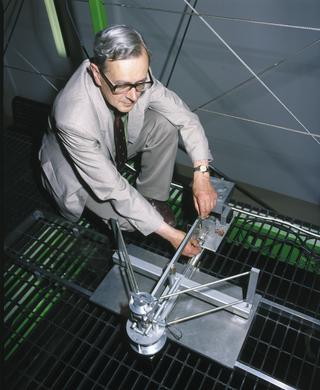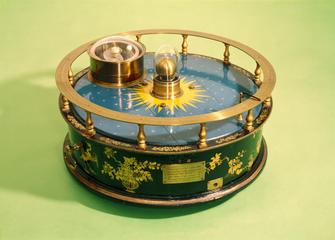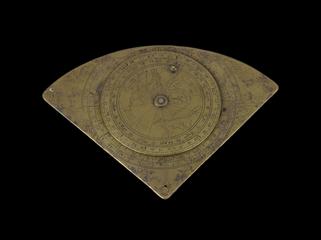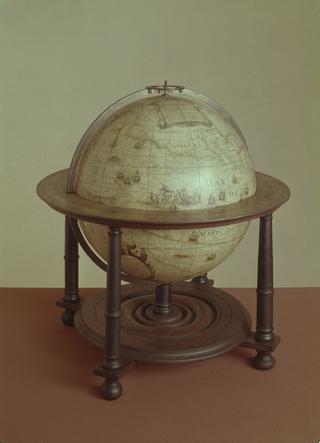
European astrolabe, 1548
- Made:
- 1548 in Germany, Nuremberg, Bavaria and Middle Franconia
- maker:
- Georg Hartmann

Planispheric astrolabe in brass gilt with 3 plates for lititudes, 39 with 42, 45 with 48 and 51 with 54, by George Hartmann of Nuremberg dated 1548, IC 268 [International Checklist] .
Dated 1548, this brass astrolabe was made by George Hartmann an instrument maker from Nuremberg, Germany. This front view shows the moveable fretwork plate called the rete that denotes star positions by short curved pointers. The astrolabe is in essence a model of the universe that an astronomer could hold in their hands. Popular in Medieval and Renaissance Europe, its many uses included timekeeping, astrology and surveying. The astrolabe is a two-dimensional depiction of the heavens whose layout is achieved using the mathematical technique of stereographic projection. From its origins in the Ancient World, Islamic astronomers developed the astrolabe from where it spread to Europe.
Details
- Category:
- Astronomy
- Object Number:
- 1880-25
- Materials:
- brass and incomplete
- Measurements:
-
overall: 230 x 30 x 160 mm
- type:
- astrolabe
- credit:
- Fulgence, Mons. (Paris)




